- Shop
JEWELRY BY TYPE
JEWELRY BRANDS
KABANA JEWELRY
COLLECTIBLES
- About Us
- Contact Us
- My Cart
- My Account
Home » Hopi Jewelry
Home » Hopi Jewelry
Residing in the arid mesas of northeastern Arizona, the culture of the Hopi people is steeped in tradition and deeply rooted spirituality. As an embodiment of their profound heritage, Hopi jewelry connects wearers to their ancestors, the natural world, and their spiritual beliefs.
As a hallmark of Native American heritage, Hopi jewelry is far more than your average accessory. Meticulously crafted with exceptional artistry, the timeless beauty of these creations is not only a testament to the skilled artisans who created them but to the Hopi belief that the world around us is a sacred and interconnected realm.
When you adorn yourself with a piece of this remarkable art, you become a part of the spiritual narrative of the Hopi people, carrying with you the blessings and protection of their ancestral wisdom. As a window into the spiritual world of its creators, the symbols and motives intricately incorporated into each piece symbolize the cycle of life and the vital elements of Hopi existence.
At Lema’s Kokopelli, we proudly feature an exquisite collection of handcrafted jewelry that embodies the rich cultural heritage of the Hopi Tribe. From earrings and necklaces to bracelets and rings, our offerings cater to every taste and style – all showcasing the intricate beauty, symbolism, and profound stories woven into each piece of jewelry.
Explore our stunning range of Hopi jewelry and find the perfect piece that resonates with your personal journey and individual style. Whether you are drawn to the beauty of ancient symbols or the modern elegance of contemporary designs, you’ll find something that connects you to the Hopi culture.


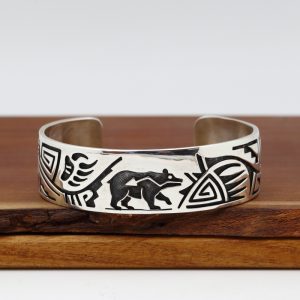
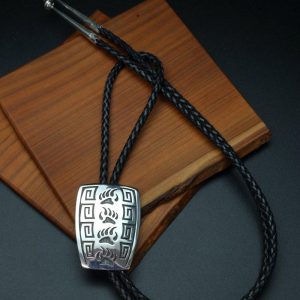 (Out of stock)
(Out of stock)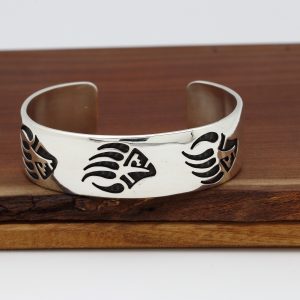

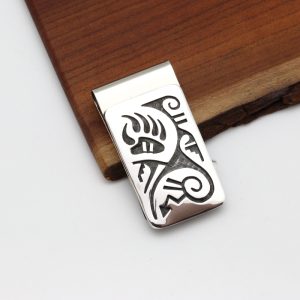 (Out of stock)
(Out of stock)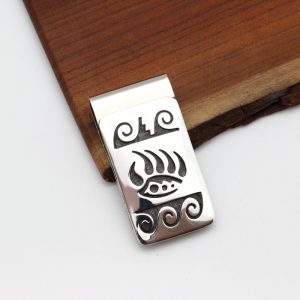 (Out of stock)
(Out of stock)
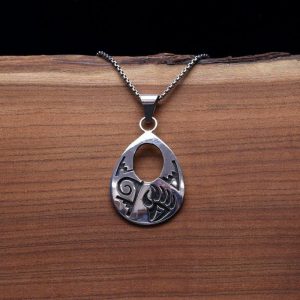
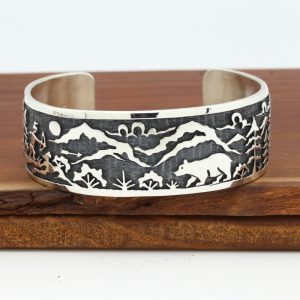
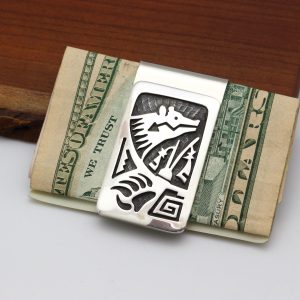

 (Out of stock)
(Out of stock)
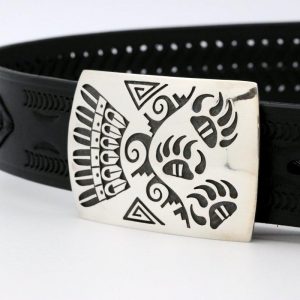
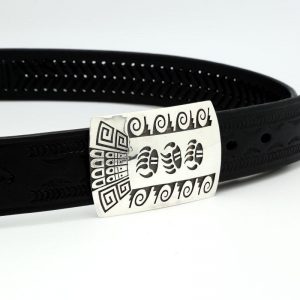

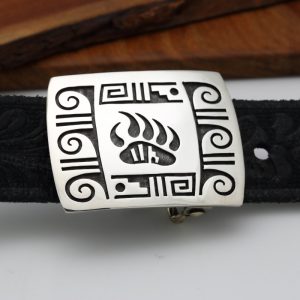 (Out of stock)
(Out of stock)
Hopi jewelry artists are primarily known for working with solid silver. The distinguishing feature of Hopi jewelry is that there are two silver pieces soldered together. This may sound like a simple process, but as with all artwork, the best pieces can only come from years of practice and patience. The end designs are characteristically bold, and yet they complement all types of different aesthetics. And that’s what makes Hopi jewelry so appealing! The pieces are easily wearable as everyday accessories, and they can stand out for special occasions too.
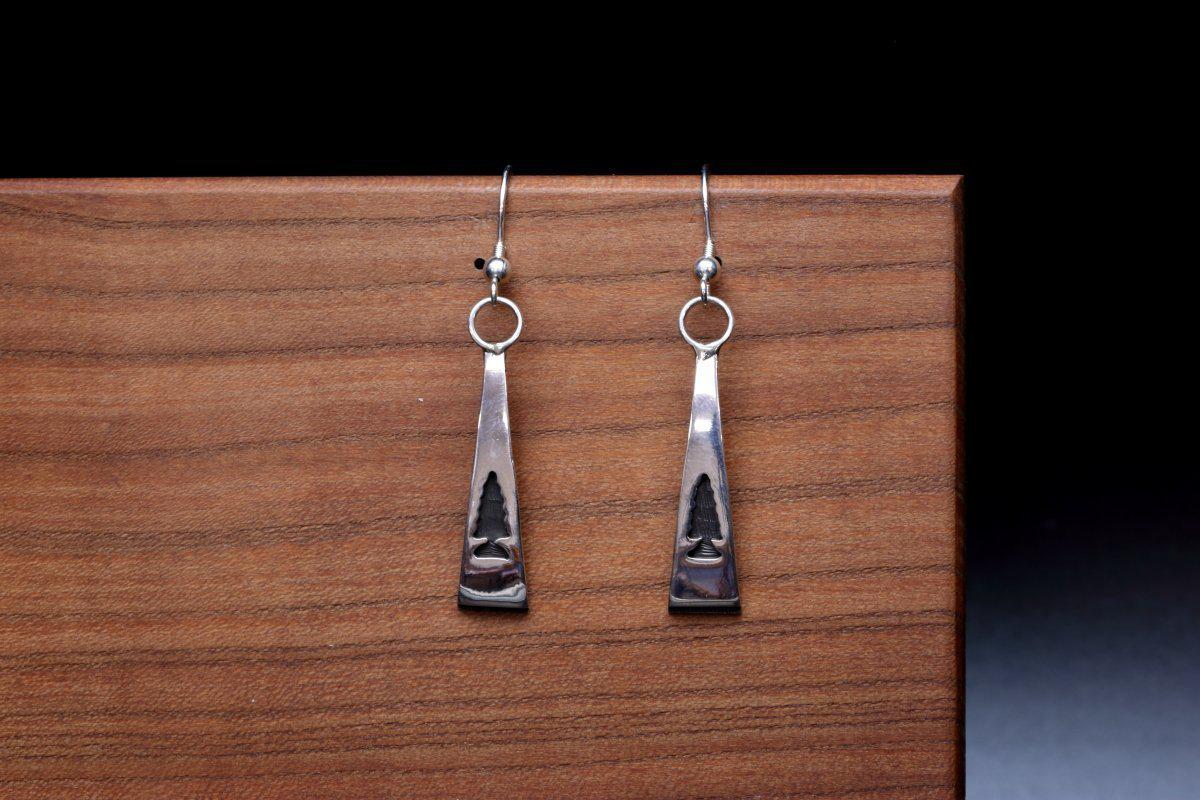
Because there’s such a wide range of styles, we like to make sure that our inventory always remains diverse—without ever compromising on quality. We’ve been sourcing and selling high-quality Hopi Indian jewelry for three generations. If you have any questions about our inventory, please reach out! We’re always happy to have a conversation and share our knowledge with both new and returning customers.
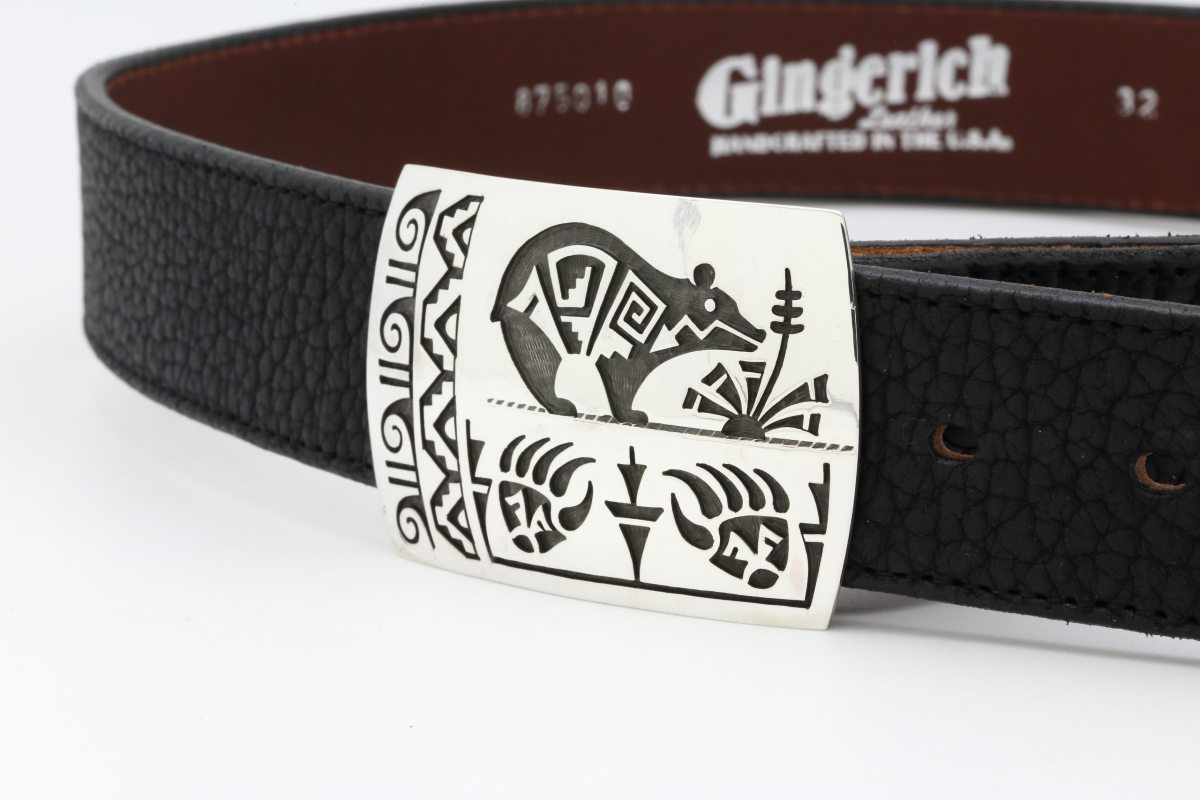
Although silversmithing came to other tribes before arriving to the Hopi jewelry artists, it’s certainly become the most important aspect of Hopi jewelry. Of course, these types of developments take time. The distinctive Hopi jewelry silverwork that we know as today’s style first started to emerge and distinguish itself from Navajo jewelry in the late 1930s. After decades of honing the craft, the overlay silverwork became even more impressive.
The rise of Hopi silversmithing really took off after World War II. There were suddenly more opportunities for proper training after the passing of the GI Bill. Since then, the traditional Hopi jewelry style has flourished and more and more Hopi jewelry artists have come onto the scene. They continue to embrace the methods of previous generations all while incorporating new designs of their own.
The process for creating Hopi Indian jewelry requires two sheets of sterling silver. First, the design work needs to be traced and cut out from one of those silver sheets. Then it’s placed on top of the other and both are soldered together. When this is done by a truly skilled artist, it’s extremely difficult to find the seam where those two pieces of silver originally met.
To create more depth and interest to the pattern, Hopi jewelry artists will then take time to carefully hammer a small, subtle texture on the bottom layer of silver. After that, the silver needs to be trimmed and shaped. Then the piece is oxidized, or “blackened,” within those cut-out spaces. This adds even more contrast to the design and is what makes Hopi jewelry unique. Finally, that upper layer of silver will get buffed or polished to give the piece its finishing touch.
While the Hopi jewelry designs are varied, in general, the pieces do not include stones. This puts the focus on the different types of Hopi jewelry symbols instead. Some of the motifs you see with Hopi jewelry have actually been adapted from other works. These often include references to other Hopi artwork, such as textiles, pottery, and even basketry. The various overlay jewelry designs can also include a lot of animal designs.
Some of the Hopi jewelry symbols include coyote and bear paw imagery. Weather-related symbols are also hugely important and prominent in Hopi jewelry. You’ll also find the Hopi flute priest—otherwise known as the Kokopelli—in plenty of pieces. (It’s obviously one of our favorites too!)
There are many stories about the origin of Kokopelli. Some acknowledge him as the god or deity of agriculture and fertility. Others just relate to Kokopelli as a fun musician. As he dances, sings, and plays his flute, he’s bringing good luck to anyone who listens to his songs.
Many people find spiritual meanings in the various Hopi jewelry symbols. These figures and references to animal totems can be powerful for people of any culture. They’re often recognized as universal symbols that ring true around the world. Naturally, jewelry that has direct connections with your beliefs can easily become one of your favorite pieces that you’ll want to wear for years to come.
People are drawn to different Hopi jewelry symbols for different reasons. Whenever you browse through Hopi jewelry for sale, it’s easy to notice that the pieces can feel both modern and yet steeped in history and tradition. There’s the initial appreciation for its boldness and style. Then you might begin to reflect on its own meaning to you, personally.
Hopi jewelry artists each have their own methodology. They might all be starting from a place of tradition, but there’s always the motivation for seasoned artists to explore new paths and push their creativity. That’s the only way to produce a wide range of pieces that are truly one-of-a-kind.
Perhaps the most intriguing Hopi jewelry symbols, though, are the ones that the silversmiths leave behind as their personal “signature.” These are also called Hopi artist hallmarks. The practice really started to take off around 1949. However, there were some Hopi jewelry artists who developed their own symbols as far back as the early 1930s.
Today, finding Hopi jewelry hallmarks is almost a given. These can be animals or patterns of animal tracks, sun symbols, lightning bolts, snow or storm clouds, feathers, leaves, and references to corn. Some Hopi jewelry artists will even use artistic variations on their initials to create their own symbol. It can be a lot of fun to learn about the history of this artform just from the Hopi jewelry hallmarks alone!
The listings you see here on our website showcase the exact item you’ll be receiving. Each piece is entirely unique, and we make sure to take the time to photograph everything individually. This attention to detail is part of the reason why Lema’s Kokopelli Gallery continues to grow. Our inventory is constantly growing and expanding every week. No two pieces are identical, so be sure to take your time as you browse our Hopi jewelry for sale—whether for yourself, or to find that special item as a gift!
Because we’re a family-owned and family-operated business, quality means a lot to us. We’ve been in this industry for three generations, and it usually doesn’t take long for our customers to realize that our expertise can help them find a truly unique piece of jewelry for their collection.
It’s also important to note that one of the best Hopi jewelry artists has chosen to work exclusively with us—which means a good selection of our Hopi jewelry for sale is especially rare. Veryl Pooyouma is a true master of his craft, and because of our close relationship, we’re often able to coordinate with him to help you create a custom piece of art. If you find a piece that particularly resonates with you, or there’s something in particular about the artist’s style that you like, please be sure to let us know!
Hopi jewelry artists are primarily known for working with solid silver. The distinguishing feature of Hopi jewelry is that there are two silver pieces soldered together. This may sound like a simple process, but as with all artwork, the best pieces can only come from years of practice and patience. The end designs are characteristically bold, and yet they complement all types of different aesthetics. And that’s what makes Hopi jewelry so appealing! The pieces are easily wearable as everyday accessories, and they can stand out for special occasions too.

Because there’s such a wide range of styles, we like to make sure that our inventory always remains diverse—without ever compromising on quality. We’ve been sourcing and selling high-quality Hopi Indian jewelry for three generations. If you have any questions about our inventory, please reach out! We’re always happy to have a conversation and share our knowledge with both new and returning customers.

Although silversmithing came to other tribes before arriving to the Hopi jewelry artists, it’s certainly become the most important aspect of Hopi jewelry. Of course, these types of developments take time. The distinctive Hopi jewelry silverwork that we know as today’s style first started to emerge and distinguish itself from Navajo jewelry in the late 1930s. After decades of honing the craft, the overlay silverwork became even more impressive.
The rise of Hopi silversmithing really took off after World War II. There were suddenly more opportunities for proper training after the passing of the GI Bill. Since then, the traditional Hopi jewelry style has flourished and more and more Hopi jewelry artists have come onto the scene. They continue to embrace the methods of previous generations all while incorporating new designs of their own.
The process for creating Hopi Indian jewelry requires two sheets of sterling silver. First, the design work needs to be traced and cut out from one of those silver sheets. Then it’s placed on top of the other and both are soldered together. When this is done by a truly skilled artist, it’s extremely difficult to find the seam where those two pieces of silver originally met.
To create more depth and interest to the pattern, Hopi jewelry artists will then take time to carefully hammer a small, subtle texture on the bottom layer of silver. After that, the silver needs to be trimmed and shaped. Then the piece is oxidized, or “blackened,” within those cut-out spaces. This adds even more contrast to the design and is what makes Hopi jewelry unique. Finally, that upper layer of silver will get buffed or polished to give the piece its finishing touch.
While the Hopi jewelry designs are varied, in general, the pieces do not include stones. This puts the focus on the different types of Hopi jewelry symbols instead. Some of the motifs you see with Hopi jewelry have actually been adapted from other works. These often include references to other Hopi artwork, such as textiles, pottery, and even basketry. The various overlay jewelry designs can also include a lot of animal designs.
Some of the Hopi jewelry symbols include coyote and bear paw imagery. Weather-related symbols are also hugely important and prominent in Hopi jewelry. You’ll also find the Hopi flute priest—otherwise known as the Kokopelli—in plenty of pieces. (It’s obviously one of our favorites too!)
There are many stories about the origin of Kokopelli. Some acknowledge him as the god or deity of agriculture and fertility. Others just relate to Kokopelli as a fun musician. As he dances, sings, and plays his flute, he’s bringing good luck to anyone who listens to his songs.
Many people find spiritual meanings in the various Hopi jewelry symbols. These figures and references to animal totems can be powerful for people of any culture. They’re often recognized as universal symbols that ring true around the world. Naturally, jewelry that has direct connections with your beliefs can easily become one of your favorite pieces that you’ll want to wear for years to come.
People are drawn to different Hopi jewelry symbols for different reasons. Whenever you browse through Hopi jewelry for sale, it’s easy to notice that the pieces can feel both modern and yet steeped in history and tradition. There’s the initial appreciation for its boldness and style. Then you might begin to reflect on its own meaning to you, personally.
Hopi jewelry artists each have their own methodology. They might all be starting from a place of tradition, but there’s always the motivation for seasoned artists to explore new paths and push their creativity. That’s the only way to produce a wide range of pieces that are truly one-of-a-kind.
Perhaps the most intriguing Hopi jewelry symbols, though, are the ones that the silversmiths leave behind as their personal “signature.” These are also called Hopi artist hallmarks. The practice really started to take off around 1949. However, there were some Hopi jewelry artists who developed their own symbols as far back as the early 1930s.
Today, finding Hopi jewelry hallmarks is almost a given. These can be animals or patterns of animal tracks, sun symbols, lightning bolts, snow or storm clouds, feathers, leaves, and references to corn. Some Hopi jewelry artists will even use artistic variations on their initials to create their own symbol. It can be a lot of fun to learn about the history of this artform just from the Hopi jewelry hallmarks alone!
The listings you see here on our website showcase the exact item you’ll be receiving. Each piece is entirely unique, and we make sure to take the time to photograph everything individually. This attention to detail is part of the reason why Lema’s Kokopelli Gallery continues to grow. Our inventory is constantly growing and expanding every week. No two pieces are identical, so be sure to take your time as you browse our Hopi jewelry for sale—whether for yourself, or to find that special item as a gift!
Because we’re a family-owned and family-operated business, quality means a lot to us. We’ve been in this industry for three generations, and it usually doesn’t take long for our customers to realize that our expertise can help them find a truly unique piece of jewelry for their collection.
It’s also important to note that one of the best Hopi jewelry artists has chosen to work exclusively with us—which means a good selection of our Hopi jewelry for sale is especially rare. Veryl Pooyouma is a true master of his craft, and because of our close relationship, we’re often able to coordinate with him to help you create a custom piece of art. If you find a piece that particularly resonates with you, or there’s something in particular about the artist’s style that you like, please be sure to let us know!
70 North Main Street
Moab, Utah 84532
Phone: 435-259-5055
Hours:
Mon-Sun: 9AM – 8PM
A proud family run retail store for over 35 years located in Moab, Utah. We’re proud of the relationships we’ve built with artists across the American Southwest.